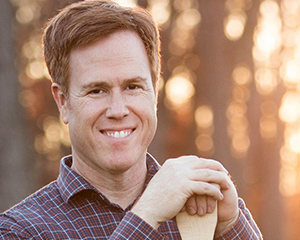
As I’ve often noted, “Would I spend a day in a canoe with you?” is a question that’s a metaphor for evaluating and managing relationships. Based on feedback I’ve received about the blog, my talks on the subject and my recently launched podcast, the canoe concept is resonating. But today I wanted to delve into some frequently asked questions and unpack some of the different ways in which the “canoe test” can help you make better decisions.
How do you describe the canoe test?
It’s an efficient way to make important determinations. More than just a self-reflective gut check, I view it as an outcome-driven assessment step in the process of growing and running a business. “Would I want to be stuck out on the water trying to paddle to a destination with this person for any length of time?” It’s a simple but powerful way to evaluate participation in any relationship. You can use it as a filter to choose who’s on your team, chart a course to reach a given goal, as well as determine individual roles and clarify responsibilities.
How frequently do you apply the canoe test in your business life?
All the time. This isn’t a shtick to me. It’s something I think carefully about with prospective employees, potential business partners, clients, people at networking events, vendors, almost everyone. It’s ingrained at this point.
Is there an area in which you use the canoe test most often?
I’ve been recruiting lately so I find it’s particularly valuable when making hiring decisions. I recently hired a chief operating officer at Planning Alternatives. It took me an entire year to find the right person. I didn’t compromise in the hiring process. And I ran the canoe test in every single interview I conducted. I met with a lot of great candidates and it would have been more convenient and less costly to have shortened the process, but my approach ultimately led to me finding exactly who I was looking for. The mistake a lot of leaders make is that they focus so much on quantitative metrics that they lose sight of the importance of people skills, cultural fit and leadership capabilities.
When pondering the canoe question, do you advise actually trying to visualize yourself out in the water sitting in a boat with that person?
People have told me they do this, but I say do whatever works. I tend to visualize an image of a canoe and overlay it onto the setting I’m in. It serves as a cue.
Do you ever second-guess yourself after coming to a decision that was informed by your canoe test?
Yes, but I second-guess myself a whole lot less. I think most good leaders maintain a healthy level of productive paranoia about whether or not they made a smart decision about who’s in their orbit and in what capacity. Focusing on character, chemistry and soft skills will serve you well and give you more confidence that you’ve made the right call.
There was one decision I struggled with years ago that crystalized the value of the canoe test for me. I had the opportunity to bring aboard an acquaintance who was going through a career transition. He was an incredibly pedigreed professional. He likely would have brought many clients to us and having him on the team would have looked great for Planning Alternatives. But the more he and I discussed the possibility, the more I came to feel that his interest was founded on a need for recognition and ego-stroking. It was really tough to ultimately say no to someone whose expertise, intelligence and business development skills I respected, but the short-term to mid-term benefits of hiring him was not worth the risk of a longer-term struggle that would harm the morale and culture of the firm.
I heard through the grapevine that this person proved not to be a “team player” where he landed and that hiring him led to internal strife. That situation affirmed my belief in the canoe test.
What do you do if you run the canoe test and still find yourself on the fence about whether to make a hire or enter a particular business partnership?
Seek outside advice. I always think it’s healthy to run canoe test scenarios by a mentor, business coach or trusted colleague. I frame the situation for the person, explain the nature of the potential relationship or arrangement, and underscore exactly what I’m trying to accomplish. I used to say, “This is the way I’m leaning,” which I learned could skew the feedback. Now I simply say, “What do you see? What do you think?” It leads to better intel – and better decisions.
How do you feel about the tables being turned and people running the canoe test on you?
I embrace it. It demonstrates an attunement to forging authentic relationships. The more a person is attuned to character and compatibility, the more I probably want to earn a seat in that person’s canoe.
Day in a Canoe Resources:
Podcast: Sign up for Day in the Canoe podcast by clicking on iTunes, Google play, or search “Day in a Canoe” in your podcast search bar.
Speaking: Nathan provides keynotes and facilitates thought-provoking discussions on leadership, teamwork, hiring and client alignment. For speaking engagement inquiries contact nathan@dayinacanoe.com.
